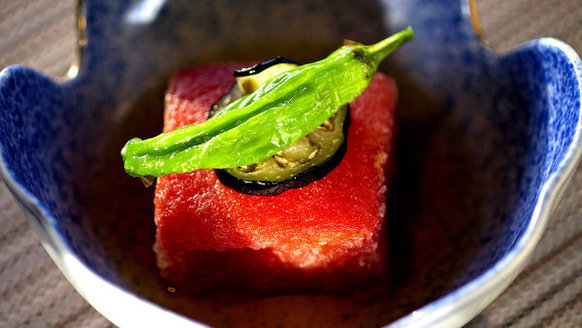The Sriracha Factory Might Be Closing, but You Can Make Your Own!
Halibutboy Flatface stashed this in Eat drink party
Stashed in: Good Eats!, Awesomesauce, Home Sweet Home!, Best of Pinterest, Recipes!, Hot Sauce!
Sriracha production has stopped during a crucial part of the process, leaving fans of spicy food to cry into their bland bowls of rice and veggies. But don't worry, make your own sriracha!
No spicy food is worth suffocating, burning stank-clouds.
I'm trying to be pragmatic about this, and remind myself that my desire to eat perfectly spicy pho does not trump other human beings' desires not to live inside of a suffocating, burning stank-cloud (#humanitarian). So, FINE. Do your thing, Irwindale.
This extremely thorough post on Serious Eats offers an in-depth investigation of which chiles are best (red jalapeños), whether or not you should blanch your garlic (no), and how to ferment your chile paste.
Another recipe, from Kimchi Mom, experimented with both a fresh and a fermented version. The fermented, she says, hews closer to storebought Sriracha, but of the fresh version, "I swear I could eat it by the spoonfuls straight out of the jar."
David Tran, the inventor of Sriracha, began selling it out of a bucket to a handful of customers in 1980. He gives some coy hints about its simplicity:
His recipe for Sriracha is so simple that the Vietnamese immigrant has never bothered to conceal it: chili pepper, garlic, salt, sugar and vinegar.
"You could make it yourself at home," he told a visitor during a tour of the plant on Tuesday. But, he added with a twinkle in his eye, not nearly as well as he can.
The LA Times test kitchen offers this recipe:
1 pound mixed fresh red chiles (such as red Fresnos or jalapeños), stemmed and chopped
2 to 4 cloves garlic
1/4 cup cane or rice vinegar
1 1/2 teaspoons sea salt, more if desired
2 tablespoons palm or light brown sugar, more if desired
1. In the bowl of a food processor, pulse together the chiles, garlic, vinegar, salt and sugar to form a coarse paste.
2. Remove the mixture to a non-reactive saucepan and simmer, stirring occasionally, until the aroma softens or mellows a bit, about 5 minutes. Remove from heat.
3. Blend the sauce again to form a smooth paste, thinning as desired with water.
4. Strain the sauce, pressing the solids through a fine mesh strainer with a rubber spatula or wooden spoon. Taste the sauce, and tweak the flavors as desired with additional salt, sugar or vinegar. Remove the sauce to a glass jar or bottle and cool completely. Refrigerate until needed.











4:06 PM Oct 30 2013